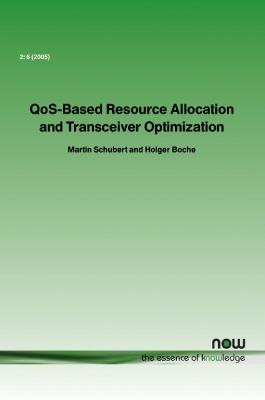Foundations and Trends (R) in Communications and Information Theory
2 total works
Majorization and Matrix Monotone Functions in Wireless Communications
by Eduard Jorswieck and Holger Boche
Published 1 January 2007
This book reviews the basic definitions of Majorization Theory and Matrix-Monotone Functions, describing their concepts clearly with many illustrative examples. In addition to this tutorial, new results are presented with respect to Schur-convex functions and regarding the properties of matrix-monotone functions.
The approach taken by the authors provides a valuable overview of the basic techniques for readers who are new to the subject. They then proceed to show in separate chapters the cutting edge applications of the two basic theories in wireless communications.
Majorization Theory and Matrix-Monotone Functions in Wireless Communications is an invaluable resource for students, researchers and practitioners involved in the state-of-the-art design of wireless communication systems.
The approach taken by the authors provides a valuable overview of the basic techniques for readers who are new to the subject. They then proceed to show in separate chapters the cutting edge applications of the two basic theories in wireless communications.
Majorization Theory and Matrix-Monotone Functions in Wireless Communications is an invaluable resource for students, researchers and practitioners involved in the state-of-the-art design of wireless communication systems.
QoS-Based Resource Allocation and Transceiver Optimization
by Martin Schubert and Holger Boche
Published 1 January 2006
QoS-Based Resource Allocation and Transceiver Optimization derives a comprehensive theoretical framework for SIR balancing, with and without noise. The theory considers the possible use of receive strategies (e.g. interference filtering or channel assignment), which can be included in the model in an abstract way. Power allocation and receiver design are mutually interdependent, thus joint optimization strategies are derived.
The book provides a better understanding of interference balancing and the characterization of the QoS feasible region. It also provides a generic algorithmic framework, which may serve as a basis for the development of new resource allocation algorithms. This is an invaluable resource for every communications engineer and researcher working on multiuser interference problems in wireless communications.
The book provides a better understanding of interference balancing and the characterization of the QoS feasible region. It also provides a generic algorithmic framework, which may serve as a basis for the development of new resource allocation algorithms. This is an invaluable resource for every communications engineer and researcher working on multiuser interference problems in wireless communications.

